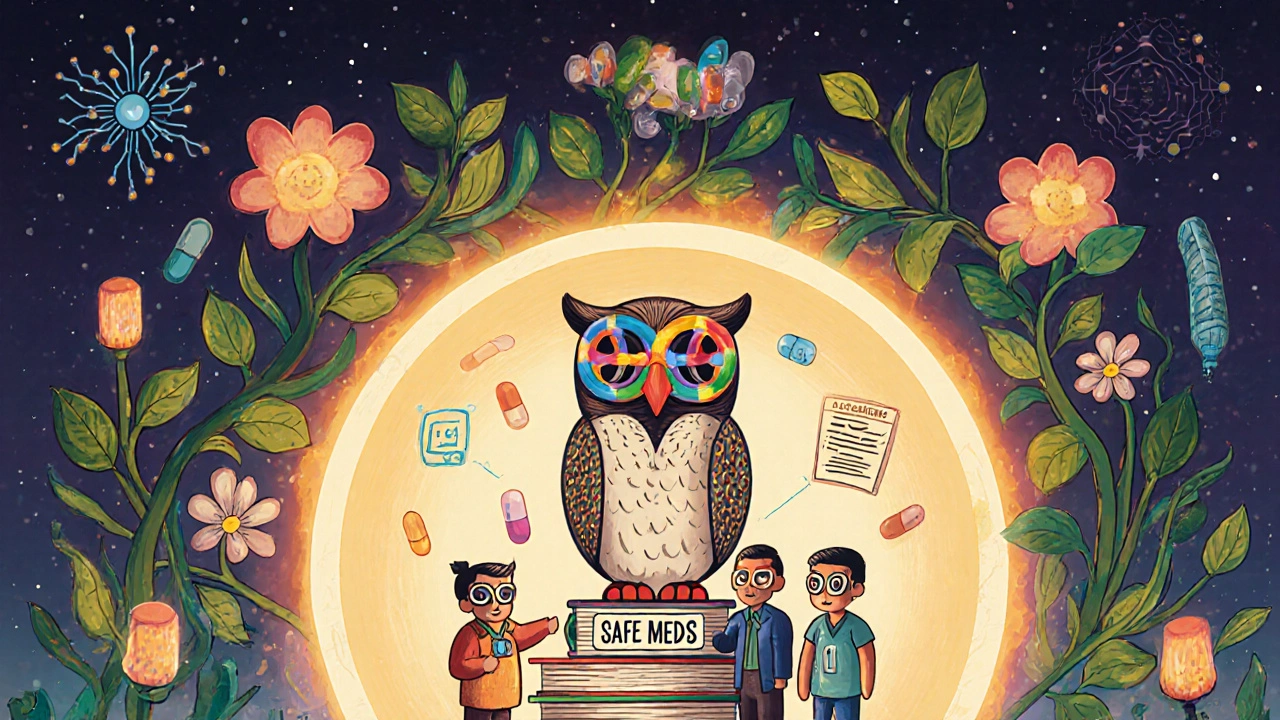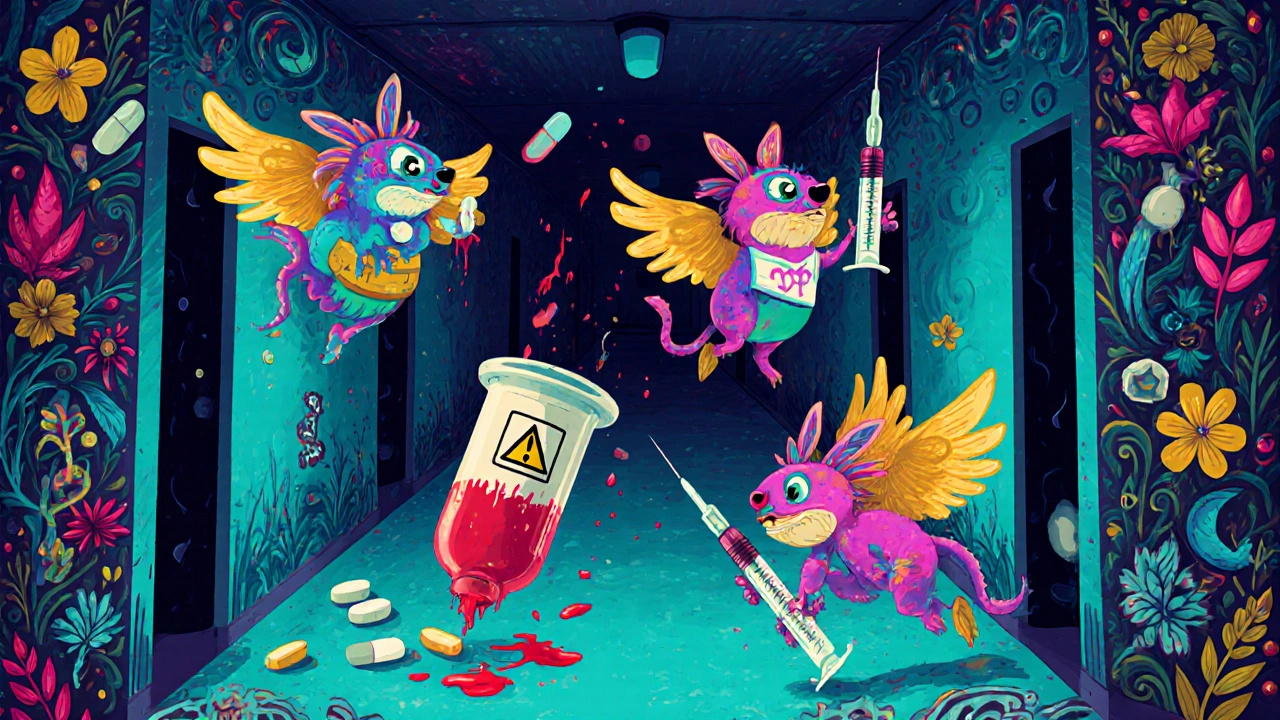Every year, hundreds of thousands of people in the U.S. end up in the hospital because of something meant to help them: their medicine. Adverse drug events aren’t rare mistakes or outliers-they’re a systemic problem that touches nearly every corner of healthcare. And the worst part? Most of them are preventable.
What Exactly Is an Adverse Drug Event?
An adverse drug event (ADE) happens when a patient gets hurt because of a medication. It’s not just about side effects. It includes mistakes in prescribing, mixing the wrong drugs, taking too much, or even not taking the right dose at the right time. The key is this: harm occurred because of medical intervention involving a drug.
The Institute of Medicine first brought this issue to light in 2000 with their report To Err is Human, which found that medication errors alone were causing at least 7,000 deaths a year in U.S. hospitals. Since then, data has only grown more alarming. Today, ADEs lead to 1 million emergency room visits and 125,000 hospital admissions every year in the U.S. That’s more than the number of people hospitalized for pneumonia or heart failure in some years.
It’s important to distinguish ADEs from other health problems. Not every bad reaction to a drug is an ADE. If someone has a known allergy and gets hives after taking penicillin, that’s an adverse drug reaction. But if a nurse gives the wrong dose because the label was misread, that’s a medication error-and together, it’s an ADE. The Patient Safety Network defines it simply: harm from exposure to a medication.
The Five Main Types of Adverse Drug Events
Not all ADEs look the same. They fall into five clear categories, each with different causes and risks.
- Adverse drug reactions are the body’s unexpected or harmful response to a drug at normal doses. Think of it like your body rejecting something it shouldn’t. These can be mild-like a rash-or deadly-like liver failure.
- Medication errors are preventable mistakes. They happen when someone prescribes the wrong drug, the pharmacy dispenses the wrong pill, or the patient takes it at the wrong time. These aren’t accidents; they’re system failures.
- Drug-drug interactions occur when two or more medications clash. For example, mixing blood thinners like warfarin with certain antibiotics can cause dangerous bleeding. Over 15% of high-risk interactions are caught by clinical tools like Lexicomp-but many slip through.
- Drug-food interactions are often overlooked. Grapefruit juice can stop your body from breaking down statins, leading to muscle damage. Calcium-rich foods can block thyroid medication. Even a simple glass of milk can ruin the effectiveness of some antibiotics.
- Overdoses can be accidental or intentional. Opioids are the biggest concern here. In 2021, over 70,000 overdose deaths in the U.S. involved synthetic opioids like fentanyl. But overdoses also happen with common drugs like acetaminophen or insulin when doses are miscalculated.
Doctors and pharmacists also classify adverse drug reactions by type. Type A reactions are predictable and dose-related-these make up 80% of all ADEs. Think dizziness from blood pressure meds or low blood sugar from insulin. Type B reactions are rare, unpredictable, and often allergic. Type C happens over time-like osteoporosis from long-term steroid use. Type D is delayed, like cancer from chemotherapy years later. Type E occurs when you stop taking a drug-like rebound high blood pressure after suddenly quitting beta-blockers.

The Top Three High-Risk Medications
Some drugs are far more dangerous than others. Three classes stand out as the biggest contributors to ADEs.
Anticoagulants, especially warfarin, are the #1 cause of ADE-related hospital admissions. Why? Because they have a narrow therapeutic window. Too little, and you risk a clot. Too much, and you bleed internally. One study found that 35% of outpatient INR tests miss the target range. Warfarin alone causes 33,000 emergency visits each year.
Diabetes medications, particularly insulin, are next. About 100,000 emergency visits each year are due to insulin-related hypoglycemia. Nearly 60% of those patients are over 65. Older adults are more sensitive to insulin, and many are on multiple meds that interfere with glucose control.
Opioids are the third major threat. The CDC reports that synthetic opioids like fentanyl caused over 70,000 deaths in 2021. Even prescription opioids can lead to accidental overdoses when patients don’t understand dosing, or when they mix them with alcohol or sleep aids. In fact, opioids are responsible for 40% of all medication-related deaths.
These aren’t random cases. They’re predictable patterns. And they’re preventable.
How to Prevent Adverse Drug Events
Preventing ADEs isn’t about hoping for the best. It’s about building systems that make mistakes harder to make.
- Medication reconciliation is one of the most powerful tools. When patients move from hospital to home-or from one doctor to another-their meds often get lost in translation. A 2020 study showed that formal medication reconciliation reduces post-discharge ADEs by 47%. That means asking: What are you taking? Why? At what dose? When? And has anything changed?
- Electronic prescribing cuts errors by nearly half. Handwritten scripts are a relic. Digital systems flag drug interactions, duplicate therapies, and incorrect dosages in real time. Yet only 45% of U.S. hospitals have fully integrated clinical decision support for high-risk drugs.
- Pharmacist involvement makes a huge difference. Pharmacists who run medication therapy management (MTM) services find and fix an average of 4.2 medication problems per patient. In VA clinics, pharmacist-led anticoagulation programs reduce major bleeding by 60% compared to standard care.
- Deprescribing is becoming essential, especially for older adults. Many seniors take five, six, even ten medications-some no longer needed. The Beers Criteria lists drugs that are risky for older people, like anticholinergics. The VA found that structured deprescribing reduces ADEs from these drugs by 40%.
- Education isn’t optional. A 2021 Cochrane review found that patients who get clear, personalized instructions on their meds improve adherence by 22%. That means fewer missed doses, fewer overdoses, and fewer trips to the ER.
Technology is also stepping up. Johns Hopkins is using AI to predict individual ADE risk by analyzing 50+ patient factors-age, kidney function, genetics, other meds, even sleep patterns. Early results show a 17% drop in ADEs. Pharmacogenomic testing, which looks at how your genes affect drug metabolism, is still rare-only 5% of patients get tested-but it’s expected to hit 30% by 2027. That could prevent 100,000 ADEs a year just by matching the right drug to the right person.

Why Prevention Still Falls Short
Despite all the tools, progress is uneven. Why?
One big reason: fragmented care. A patient sees a cardiologist, a primary care doctor, a pharmacist, and a specialist-all without sharing full records. Medication lists get outdated. Allergies aren’t updated. Dosing changes aren’t communicated.
Another problem: underuse of proven tools. Only 15% of primary care providers regularly screen for inappropriate medications in elderly patients, even though the Beers Criteria have been around for decades. Many still rely on memory instead of clinical decision support.
And then there’s the human factor. Doctors are rushed. Nurses are overworked. Patients are overwhelmed. A 78-year-old with diabetes, heart disease, and arthritis might be handed a bag of 12 pills with no clear instructions. No wonder so many end up back in the hospital.
The Future of Medication Safety
The U.S. Department of Health and Human Services launched its National Action Plan for ADE Prevention in 2014, and updated it in 2023 to include newer high-risk drugs like monoclonal antibodies and antipsychotics. The WHO’s Medication Without Harm campaign reduced global harm by 18%-a step forward, but still short of the 50% goal.
The path forward is clear: integrate technology, empower pharmacists, standardize protocols, and put patients at the center. Electronic health records must talk to each other. AI tools need to be widely adopted. Pharmacists must be part of every care team-not just the pharmacy counter.
And most importantly, we need to stop treating medication safety as an afterthought. It’s not about being perfect. It’s about building systems so that even when people make mistakes, the system catches them before harm happens.
Medicine saves lives. But it can also harm them-sometimes in ways we never see coming. The difference between safety and danger isn’t luck. It’s action.
What’s the difference between an adverse drug reaction and an adverse drug event?
An adverse drug reaction (ADR) is a harmful response to a drug at normal doses-like a rash or nausea. An adverse drug event (ADE) is any injury caused by medication use, including ADRs, but also medication errors, overdoses, and drug interactions. So all ADRs are ADEs, but not all ADEs are ADRs.
Which medications cause the most adverse drug events?
The top three are anticoagulants (especially warfarin), diabetes medications (particularly insulin), and opioids. Warfarin causes 33% of anticoagulant-related ADEs due to its narrow therapeutic window. Insulin leads to about 100,000 emergency visits yearly, mostly in older adults. Opioids caused over 70,000 overdose deaths in 2021, mostly from synthetic versions like fentanyl.
Can pharmacists really prevent adverse drug events?
Yes. Pharmacists who run medication therapy management (MTM) services identify and resolve an average of 4.2 medication problems per patient. In VA hospitals, pharmacist-led anticoagulation clinics cut major bleeding events by 60%. They catch drug interactions, check for duplications, review dosing, and educate patients-all things doctors often don’t have time for.
Are electronic prescriptions better than handwritten ones?
Absolutely. Electronic prescribing reduces medication errors by 48%, according to the Agency for Healthcare Research and Quality. Digital systems flag incorrect doses, drug interactions, and allergies in real time. Handwritten scripts are prone to misreading, missing info, and lack safety checks.
What can patients do to protect themselves from adverse drug events?
Keep an up-to-date list of all your medications-including supplements and over-the-counter drugs. Ask your doctor or pharmacist: Why am I taking this? What side effects should I watch for? Could this interact with my other meds or food? Never stop or change a dose without talking to your provider. Bring your list to every appointment.
Is deprescribing safe?
Yes, when done properly. Deprescribing means stopping medications that are no longer needed or are risky-especially for older adults. Studies show it reduces ADEs by up to 40% for drugs like anticholinergics. The key is doing it slowly and with medical supervision. Never stop a drug suddenly without guidance.
Medication safety isn’t just a hospital problem. It’s a daily reality for millions. The tools exist. The data is clear. The question isn’t whether we can prevent these events-it’s whether we’ll choose to.

JAY OKE
November 25, 2025 AT 19:14Been a nurse for 12 years and I can tell you - most ADEs happen because someone’s rushed, tired, or just didn’t double-check. Not because they’re bad people. Just human. The system’s broken, not the staff.
My unit started using barcode med checks last year. ER visits from our med errors dropped 40%. Simple tech. Big difference.